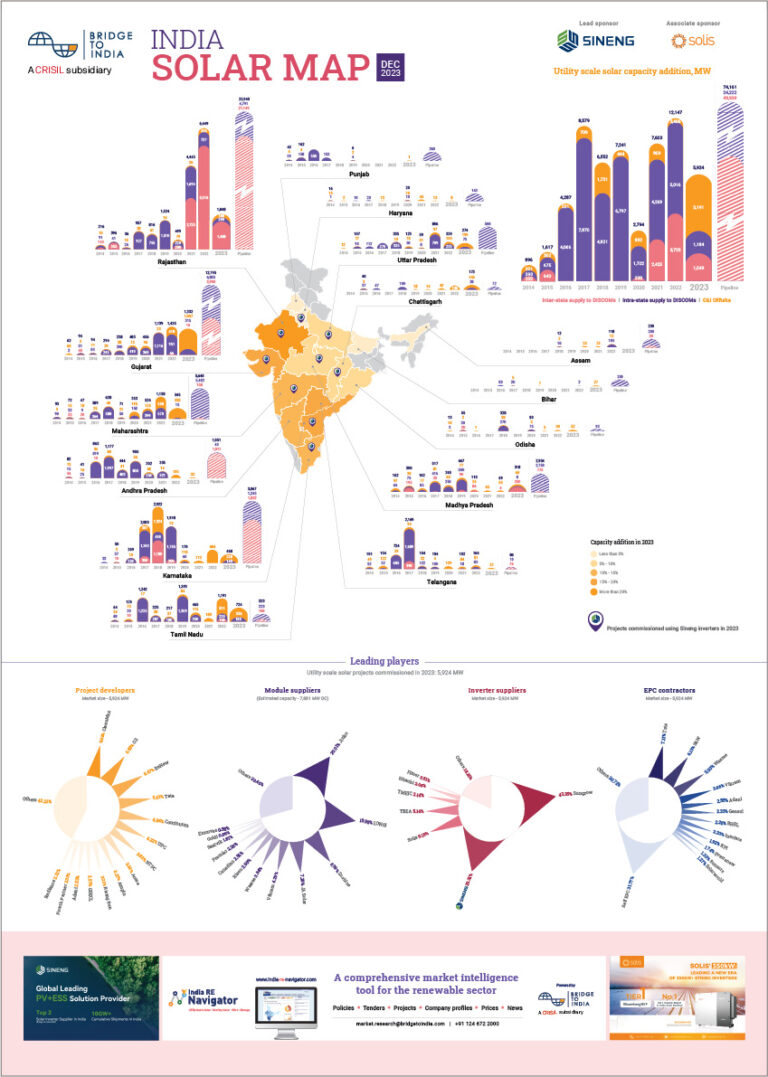Trading of Renewable Energy Certificates (REC) resumed on 24 November 2021 after a suspension lasting over 16 months due to a legal tussle over regulated prices. The first trading session saw an enthusiastic response on the back of huge pent-up demand with over 3.5 million RECs traded, out of total accumulated inventory of 8.6 million. Total traded volume was split 9:91 between solar and non-solar RECs at prices of INR 2,000 and INR 1,000 respectively. Interestingly, C&I consumers accounted for 69% share of total purchases on the Indian Energy Exchange, one of the two exchanges trading RECs.
- Stricter RPO enforcement is leading to high demand for RECs and may push the prices further up;
- High REC prices and limited availability should eventually push obligated entities to procure more renewable power;
- We expect the REC mechanism to be eventually amalgamated with other market mechanisms as part of a larger carbon trading market;
Trading had been suspended since June 2020 when some power producers challenged a CERC order removing floor and forbearance prices of INR 1,000 and INR 2,500 respectively. APTEL (Appellate Tribunal of Electricity) has set aside CERC’s order citing that the latter had not complied with stipulated consultation process.
Detailed state level information is not available but we believe that only four states including Karnataka, Rajasthan, Andhra Pradesh and Telangana were Renewable Purchase Obligations (RPO) compliant in FY 2020. Lax RPO enforcement by state regulators, a historic problem, is getting fixed slowly but surely. Recently, Punjab regulator asked the state DISCOMs to clear their RPO shortfall of 562 million kWh by procuring necessary RECs by March 2022. Similarly, Uttar Pradesh regulator imposed a hefty penalty of INR 15 billion (USD 200 million) on the DISCOMs for RPO shortfall of 14.6 billion kWh in FY 2021. Indeed, the Draft Electricity Act Bill, now tabled in the winter session of the Parliament, is proposing additional penalties of up to INR 2.00/ kWh for failure to meet RPOs. Trading momentum should therefore continue at least until March owing to massive RPO backlog.
However, the mechanism is beset with two fundamental problems. One, there is simply not enough supply of RECs as most renewable projects pass associated ‘green attributes’ directly to offtakers. Only 4% of total renewable power capacity is registered for RECs is only 4.5 GW, about (see chart below). Solar’s share in this capacity is only 21%, explaining higher demand and prices for solar RECs.
Figure 4: Capacity addition under REC mechanism, MW

Source: REC Registry of India
Two, there is still no uniform RPO trajectory across the country. States are free to set their own targets irrespective of central government guidance and COP commitments. Even the national trajectory, currently set until only March 2022, needs to be extended.
Looking further ahead, it is a matter of time before REC prices are fully liberalised. CERC should be able to do away with floor and forbearance prices after following a due consultation process. The change would be consistent with the Ministry of Power’s recent recommendations on reforming the REC mechanism. But there is need for a more ambitious overhaul. RECs should be made fungible with other market mechanisms including Perform, Achieve and Trade (PAT) scheme and Energy Saving Certificates (ESCerts) to establish a homogenous and efficient carbon trading market consistent with the new COP deal.












